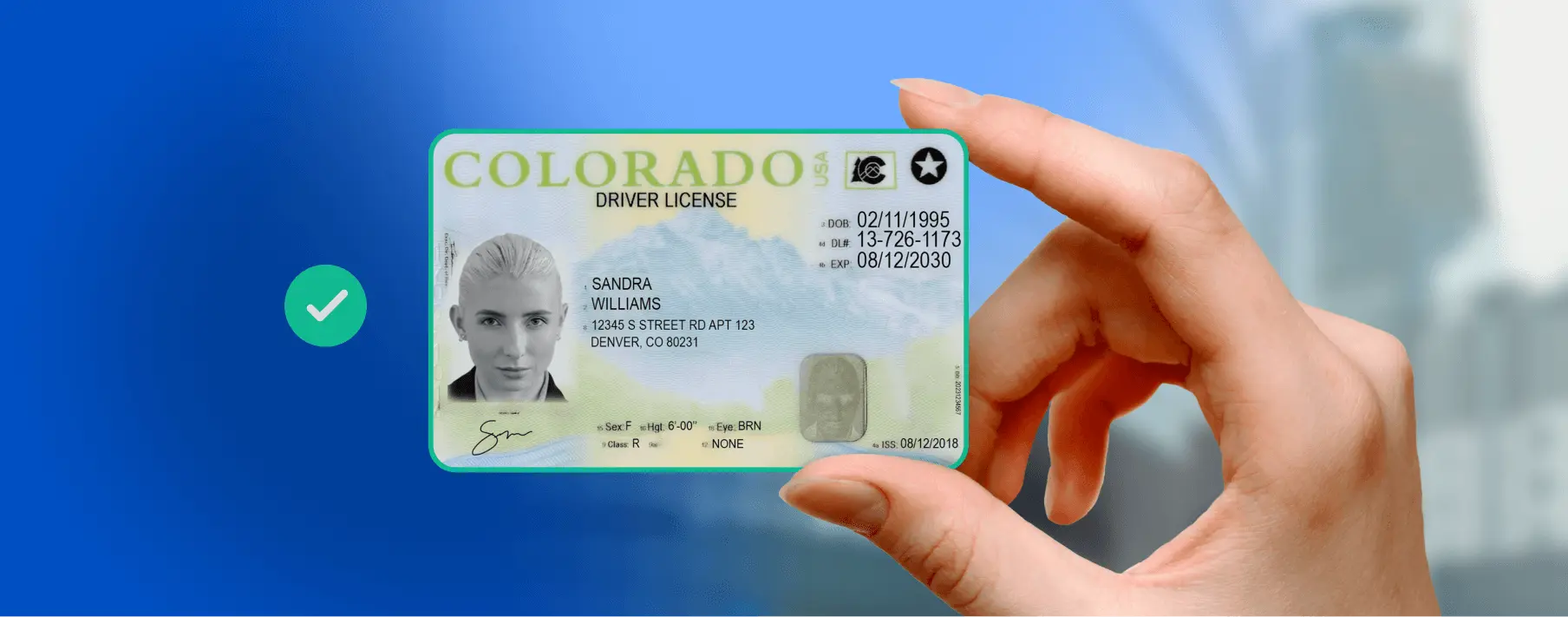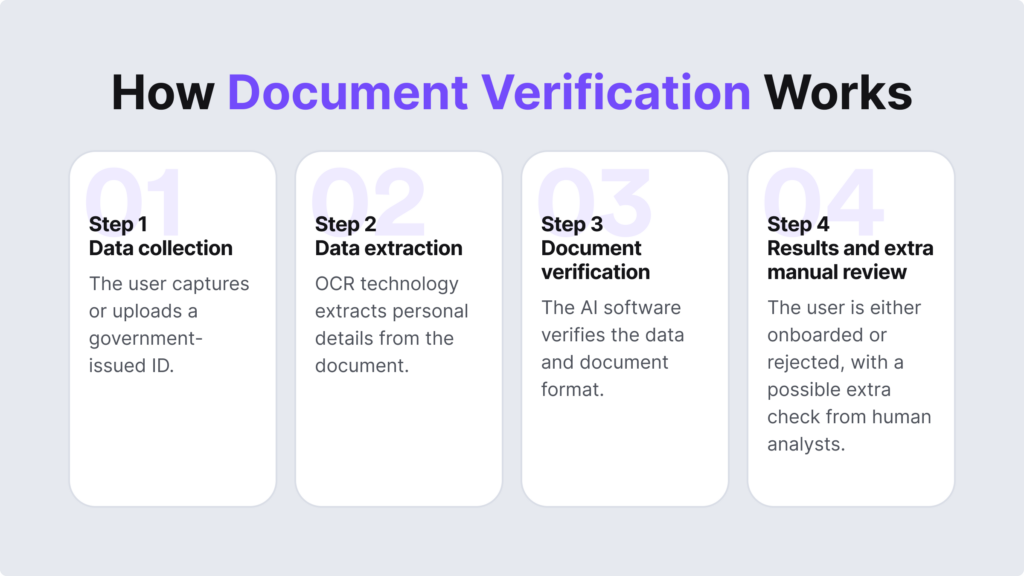Document Authenticity Verification ensures that a document is genuine and has not been tampered with. It is crucial for maintaining trust and security in various industries.
Document authenticity verification is vital in today’s digital age. Businesses, governments, and individuals rely on verified documents to make informed decisions. This process involves checking the document’s origin, integrity, and content accuracy. Various methods such as digital signatures, blockchain technology, and watermarking are used.
These techniques help prevent fraud, forgery, and data manipulation. As digital transactions increase, so does the need for robust verification systems. Ensuring document authenticity protects sensitive information and upholds legal and financial integrity. Investing in reliable verification methods can save time, resources, and potential legal issues.

Introduction To Document Authenticity
Document authenticity is crucial in our digital age. Ensuring documents are genuine protects against fraud and misinformation. Authentic documents help maintain trust in various fields.
Importance Of Verification
Verification ensures documents are real and trustworthy. It prevents identity theft and fraud. Verified documents are vital in finance, education, and legal sectors.
- Finance: Verified documents prevent financial fraud.
- Education: Schools need real certificates to confirm qualifications.
- Legal: Courts rely on authentic documents for justice.
Without verification, trust in systems erodes. This can lead to chaos and mistrust.
Common Challenges
Verification faces many challenges. Fake documents are increasingly sophisticated. This makes it hard to distinguish real from fake.
- Advanced Forgery: Modern technology makes forgery easier.
- Volume: Large numbers of documents are hard to verify manually.
- Lack of Resources: Many institutions lack the tools for proper verification.
These challenges necessitate advanced verification techniques. This includes digital signatures and blockchain technology.
| Challenge | Solution |
| Advanced Forgery | Use of digital signatures |
| Volume | Automated verification systems |
| Lack of Resources | Invest in verification tools |
Addressing these challenges ensures the authenticity of crucial documents.
Methods Of Document Authenticity Verification
Document authenticity verification ensures the integrity of important documents. Two prominent methods are watermarking and digital signatures. Each method offers unique benefits and security features.
Watermarking
Watermarking embeds a hidden mark or pattern in documents. This mark is often invisible to the naked eye. Watermarks can be detected using special tools. They help identify the document’s origin and verify its authenticity.
Watermarks are used in various documents, such as:
- Currency notes
- Legal papers
- Certificates
There are two main types of watermarks:
- Visible Watermarks: These are noticeable by viewers.
- Invisible Watermarks: These require special equipment to view.
Digital Signatures
Digital signatures provide a secure method for verifying documents online. They use cryptographic techniques to ensure the document’s integrity. A digital signature confirms the sender’s identity and the document’s authenticity.
Key features of digital signatures include:
- Encryption
- Authentication
- Non-repudiation
Digital signatures are widely used in:
| Sector | Application |
| Finance | Bank transactions |
| Healthcare | Medical records |
| Legal | Contracts |
Incorporating these methods ensures documents remain secure and trustworthy.
Technological Solutions For Document Authenticity Verification
In the digital age, verifying document authenticity has become crucial. Technological solutions offer advanced methods to ensure documents are genuine. These methods enhance security and trust in digital transactions.

Blockchain Technology
Blockchain technology provides a decentralized way to verify documents. Each document is stored in a blockchain ledger. This ledger is tamper-proof and transparent.
Blockchain technology ensures that documents are secure. It uses cryptographic algorithms to protect data. This makes it difficult for hackers to alter information.
Here are some benefits of using blockchain for document verification:
- Immutability: Once added, data cannot be changed.
- Transparency: Everyone in the network can see the data.
- Security: It uses advanced encryption methods.
Artificial Intelligence
Artificial Intelligence (AI) plays a significant role in document verification. AI algorithms can analyze documents quickly and accurately. They detect any signs of tampering or forgery.
AI tools use machine learning to improve over time. They learn from previous data and become more accurate. This makes AI an effective solution for document verification.
Here are some features of AI in document verification:
- Pattern Recognition: AI can identify patterns in documents.
- Data Analysis: AI processes large amounts of data quickly.
- Fraud Detection: AI detects anomalies and flags suspicious documents.
Combining blockchain technology and AI provides robust solutions for document authenticity verification. These technologies ensure that documents are secure, accurate, and trustworthy.
Legal Implications
Document authenticity verification holds significant legal implications. Ensuring that documents are genuine is crucial for legal compliance. This process helps prevent fraud and maintain trust in legal and business environments.
Regulatory Standards
Various countries and industries have set regulatory standards for document verification. These standards ensure that the documents meet the required authenticity criteria. Adhering to these standards helps organizations stay legally protected.
For example:
- ISO standards for document verification
- GDPR compliance in the European Union
- HIPAA regulations for healthcare documents in the U.S.
Compliance Requirements
Organizations must follow specific compliance requirements to verify documents accurately. Failure to comply can result in legal penalties and loss of trust. Compliance ensures that the documents are legally valid and recognized by authorities.
| Requirement | Details |
| Verification Procedures | Organizations must follow standardized procedures for verification. |
| Data Protection | Ensure that personal data is protected during verification. |
| Auditing | Maintain records for audit purposes to prove compliance. |
Meeting these compliance requirements helps organizations avoid legal issues. It also boosts their credibility and reliability in the market.
Case Studies
Exploring real-world case studies helps us understand how document authenticity verification works. These examples show both successes and lessons learned. They offer valuable insights for improving future implementations.
Successful Implementations
Many organizations have successfully implemented document authenticity verification. Their experiences provide useful guidelines.
| Organization | Solution | Outcome |
| Bank A | Blockchain-based verification | Reduced fraud by 40% |
| University B | Digital certificates | Increased trust in diplomas |
| Government C | Biometric verification | Faster passport processing |
These examples highlight the effectiveness of different solutions. Each organization tailored the technology to fit their needs. The outcomes were significant, showing the power of document authenticity verification.
Lessons Learned
Learning from these implementations is crucial. They offer important lessons.
- Customization is key. One size does not fit all.
- Integration with existing systems can be challenging.
- Training staff ensures smooth implementation.
- User-friendly interfaces increase adoption rates.
- Continuous monitoring and updates are essential.
These lessons help improve future document authenticity verification projects. They ensure smoother implementations and better outcomes.
Best Practices
Ensuring document authenticity is crucial. Follow these best practices to maintain security. Regular audits and employee training are key steps. These steps help in preventing fraud and errors.
Regular Audits
Regular audits are essential. Schedule them monthly or quarterly. Check for discrepancies and unusual activities. Use audit trails to track changes. Identify and correct errors promptly.
| Audit Task | Frequency |
| Review document changes | Monthly |
| Check user access logs | Quarterly |
| Verify document integrity | Monthly |
Employee Training
Employee training is vital. Train employees on document verification techniques. Teach them to spot fake documents. Use hands-on sessions for better learning. Regular training keeps skills sharp.
- Conduct training sessions regularly.
- Use real-world examples in training.
- Update training materials periodically.
Encourage employees to report suspicious activities. Provide a clear reporting process. Recognition and rewards can motivate them.
Future Trends
The future of document authenticity verification is evolving rapidly. With new threats and innovative solutions, the landscape is constantly changing. Staying updated with the latest trends is crucial for maintaining security and trust. Below are some key trends shaping the future of document authenticity verification.
Evolving Threats
As technology advances, so do the threats. Cybercriminals are getting smarter and more sophisticated. They use advanced techniques to create fake documents. This makes verification more challenging.
Some evolving threats include:
- Deepfake Technology
- AI-generated Forgeries
- Phishing Scams
Deepfake technology can alter images and videos. AI-generated forgeries can create realistic fake documents. Phishing scams trick people into sharing sensitive information. These threats require new solutions for effective document verification.
Innovative Solutions
New solutions are emerging to counter these threats. These innovations help ensure documents are authentic and trustworthy. Some of the most promising solutions include:
- Blockchain Technology
- Artificial Intelligence
- Biometric Verification
Blockchain technology offers a decentralized way to verify documents. It ensures data cannot be altered once recorded. This makes it ideal for storing and verifying sensitive information.
Artificial intelligence can quickly detect anomalies in documents. It uses machine learning algorithms to identify fake documents. This makes the verification process faster and more accurate.
Biometric verification adds an extra layer of security. It uses unique biological traits like fingerprints and facial recognition. This makes it harder for fraudsters to create fake documents.
| Threats | Solutions |
| Deepfake Technology | Blockchain Technology |
| AI-generated Forgeries | Artificial Intelligence |
| Phishing Scams | Biometric Verification |
By adopting these innovative solutions, we can stay ahead of evolving threats. This ensures that document authenticity verification remains robust and reliable.
Frequently Asked Questions
What Is Document Authenticity Verification?
Document authenticity verification ensures the legitimacy of documents by checking for signs of forgery or tampering.
How Does Document Verification Work?
Verification uses technology and expert analysis to compare document features against known standards and databases.
Why Is Document Verification Important?
It prevents fraud, ensures trust in transactions, and maintains the integrity of legal, financial, and personal records.
Which Documents Need Verification?
Passports, IDs, certificates, licenses, and financial documents often require authenticity verification to ensure their validity.
Can Fake Documents Be Detected?
Yes, advanced verification tools and expert analysis can effectively identify fake or tampered documents.
What Technologies Are Used In Verification?
Technologies include OCR, digital watermarks, blockchain, and AI-driven algorithms to ensure document authenticity.
Conclusion
Ensuring document authenticity is crucial for security and trust. Implementing verification methods helps prevent fraud and identity theft. Utilize advanced tools and techniques to verify documents effectively. Stay vigilant and keep your data secure. By doing so, you protect both personal and professional interests.
Start prioritizing document authenticity today.


One Reply on “Document Authenticity Verification: Ensure Trust and Security in 2024”